#ivor barnard
Explore tagged Tumblr posts
Photo
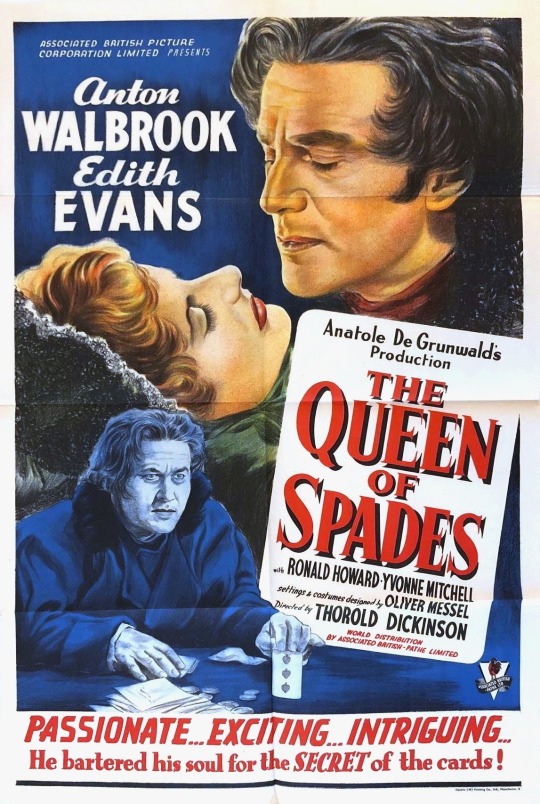






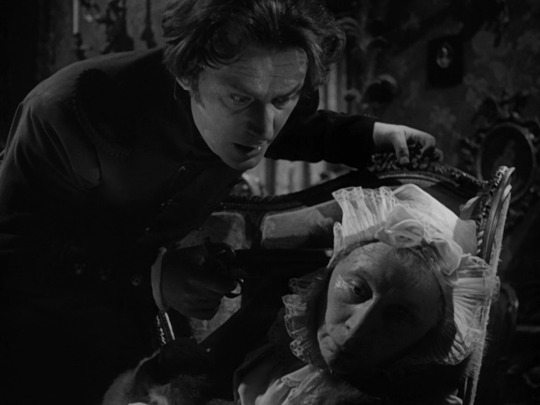

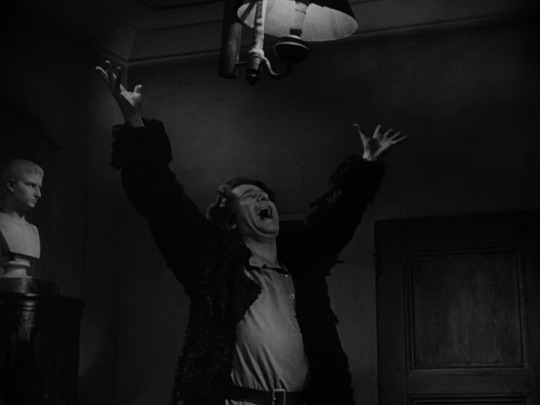
The Queen of Spades (1949, Thorold Dickinson)
1/19/23
#The Queen of Spades#Anton Walbrook#Edith Evans#Yvonne Mitchell#Ronald Howard#Mary Jerrold#Anthony Dawson#Miles Malleson#Michael Medwin#Athene Seyler#Ivor Barnard#Alexander Pushkin#40s#drama#book adaptation#horror#psychological#faustian#gambling#guilt#aristocrats#18th Century#Russia#cards#madness#supernatural#British
19 notes
·
View notes
Photo

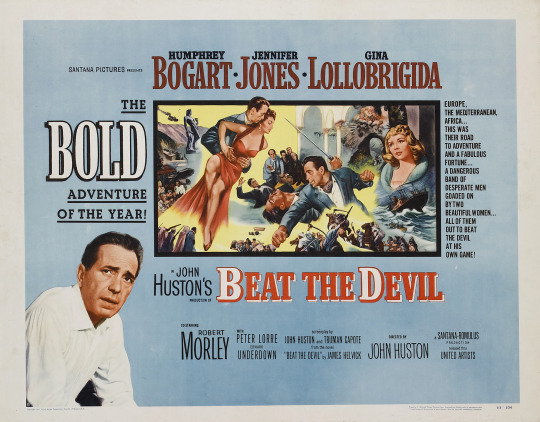
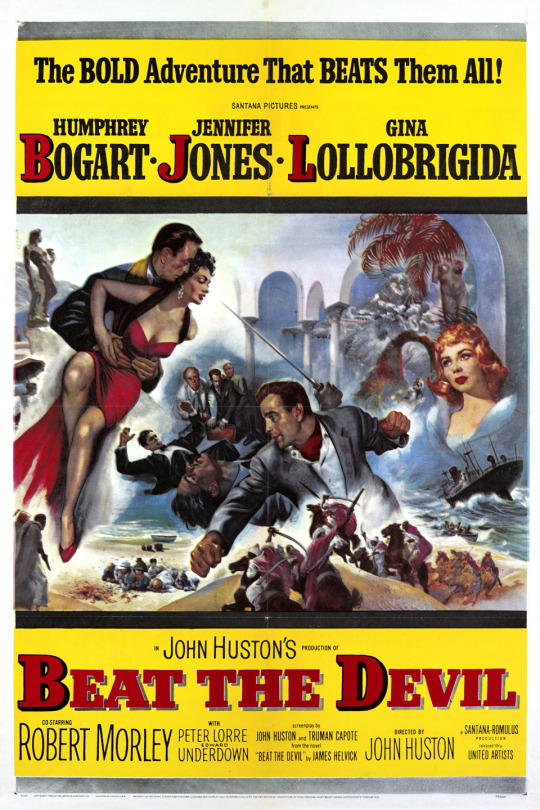
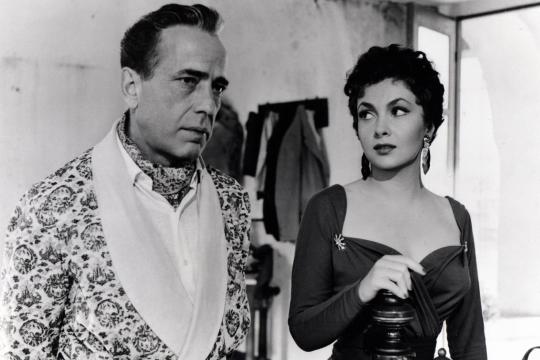
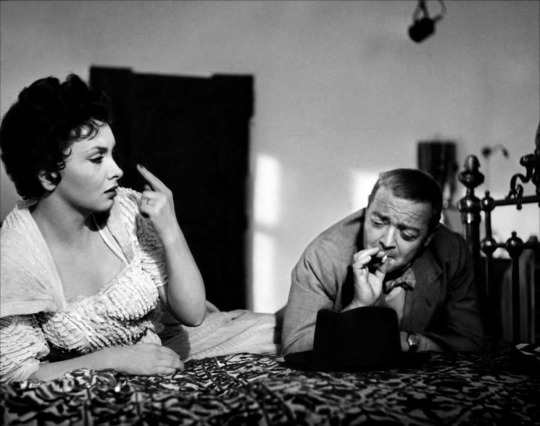
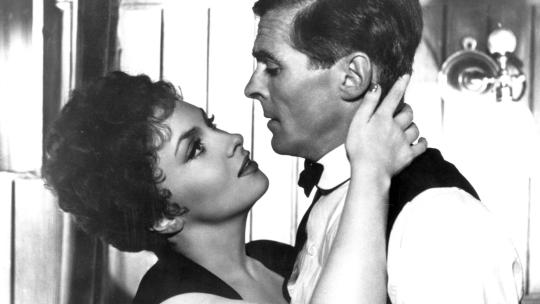
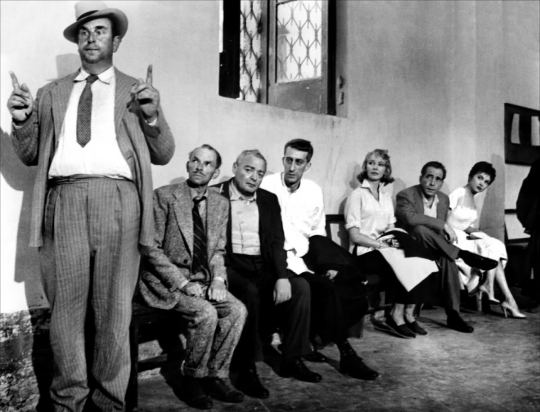
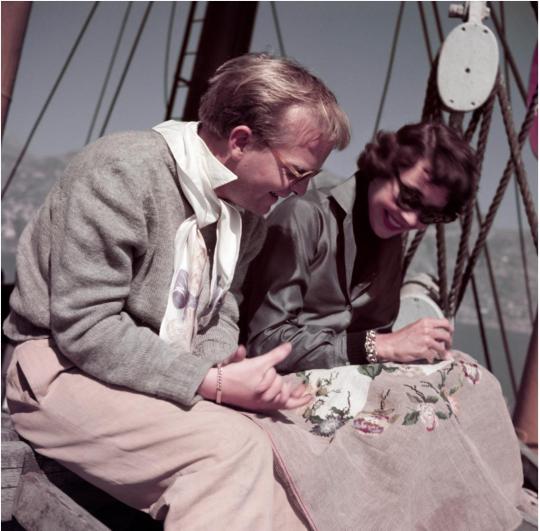
Beat the Devil (1953) John Huston
July 15th 2022
#beat the devil#1953#john huston#humphrey bogart#jennifer jones#gina lollobrigida#robert morley#peter lorre#edward underdown#ivor barnard#marco tulli#mario perrone#saro urzi#manuel serrano#bernard lee#peter sellers
19 notes
·
View notes
Photo
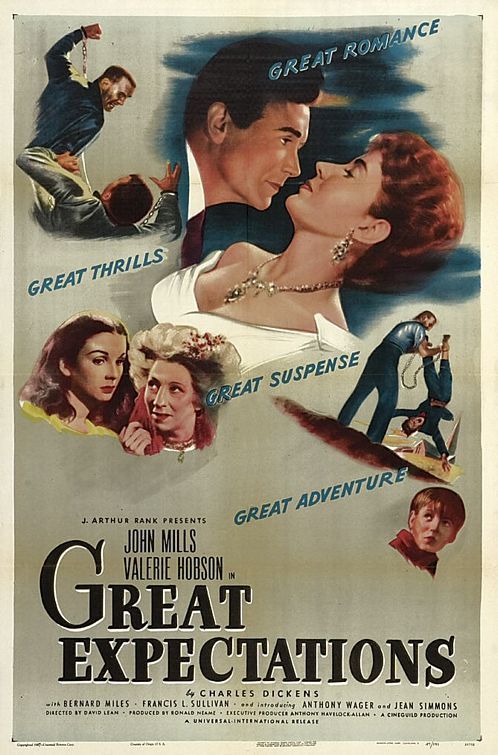
#Great Expectations#John Mills#Tony Wager#Valerie Hobson#Jean Simmons#Bernard Miles#Francis L. Sullivan#Finlay Currie#Martita Hunt#Alec Guinness#Ivor Barnard
5 notes
·
View notes
Text
The 39 Steps (1935) Review
The 39 Steps (1935) Review
When Richard Hannay is in London he gets more than he bargained for when meeting Annabella Smith who claims she is running away from secret agents, he agrees to help her by hiding her but she is murdered during the night and he quickly becomes the prime suspect and must go on the run to save himself. ⭐️⭐️⭐️⭐️ (more…)

View On WordPress
#1935#Alfred Hitchcock#Based on a Novel#BBC iPlayer#Charles Bennet#Charles Bennett#Crime#Frank Cellier#Godfrey Tearle#Gus McNaughton#Helen Haye#Ian Hay#Ivor Barnard#Jerry Verno#John Buchan#John Laurie#Lucie Mannheim#Madeleine Carroll#Matthew Boulton#Mystery#Noel Birkin#Peggy Ashcroft#Peggy Simpson#Review#Robert Donat#The 39 Steps#Thriller#Wylie Watson
1 note
·
View note
Photo

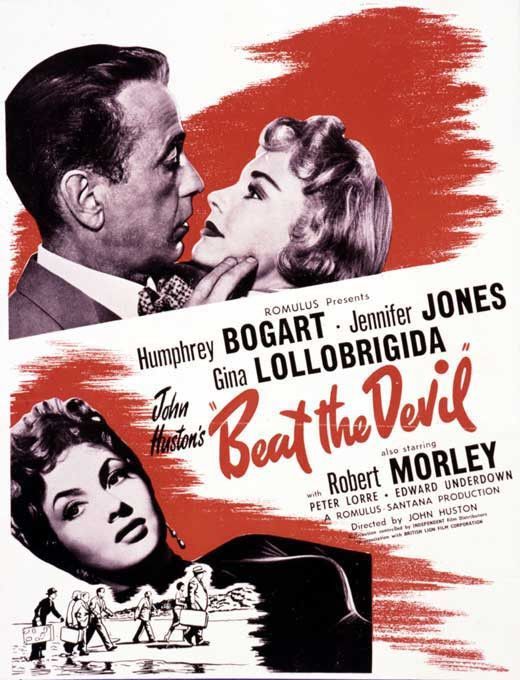
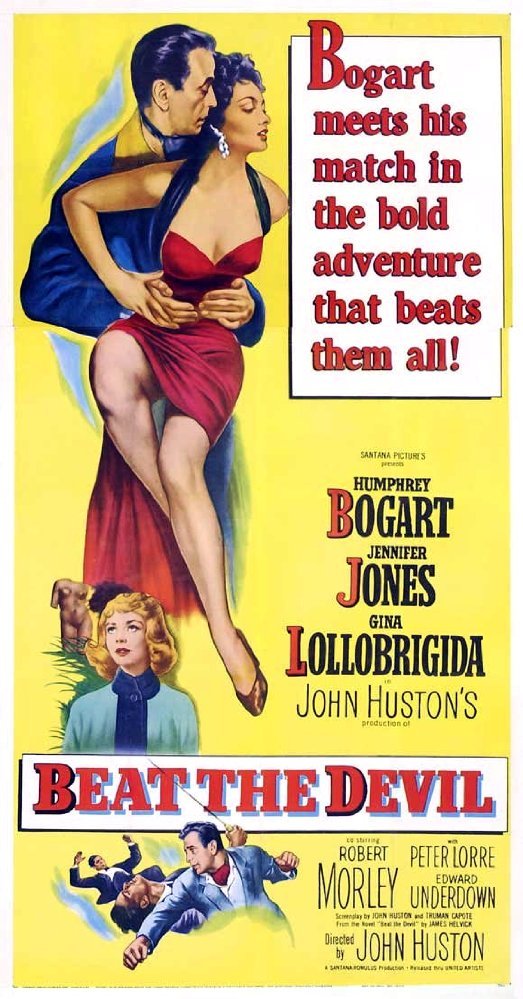

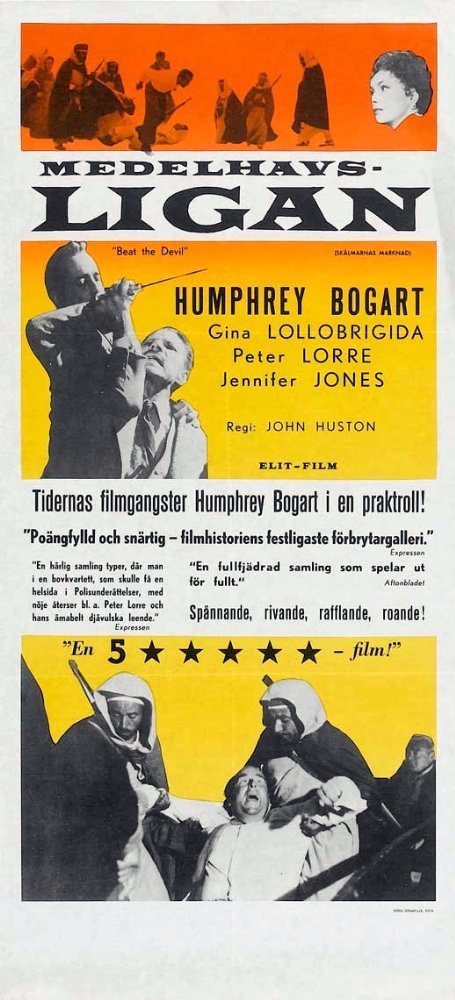
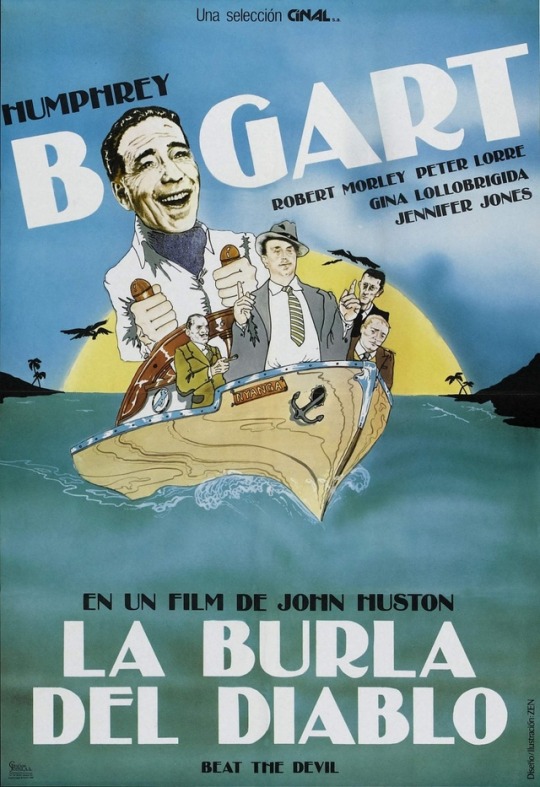
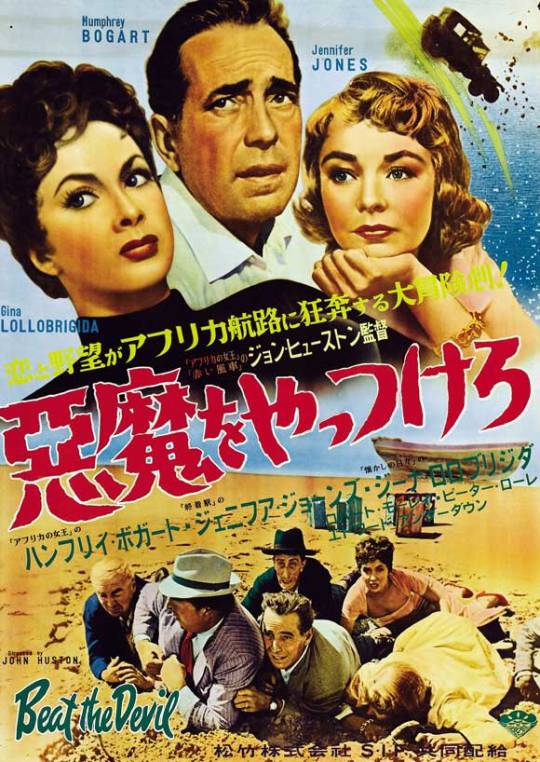
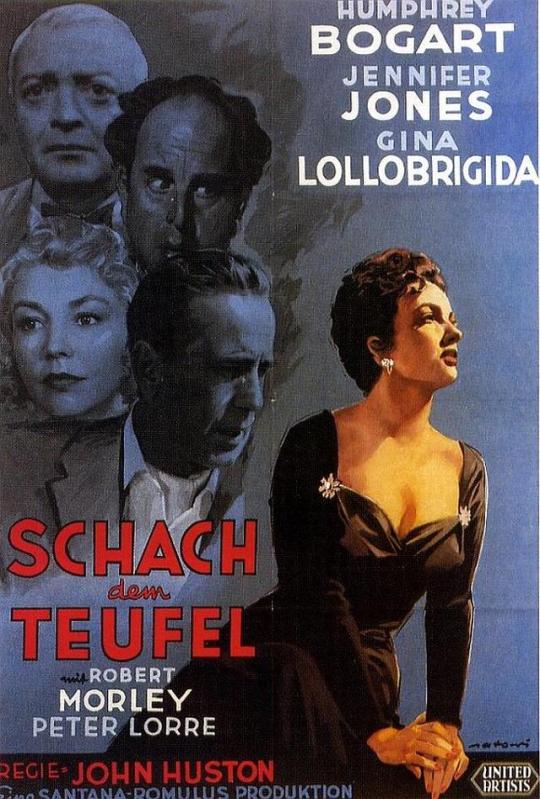
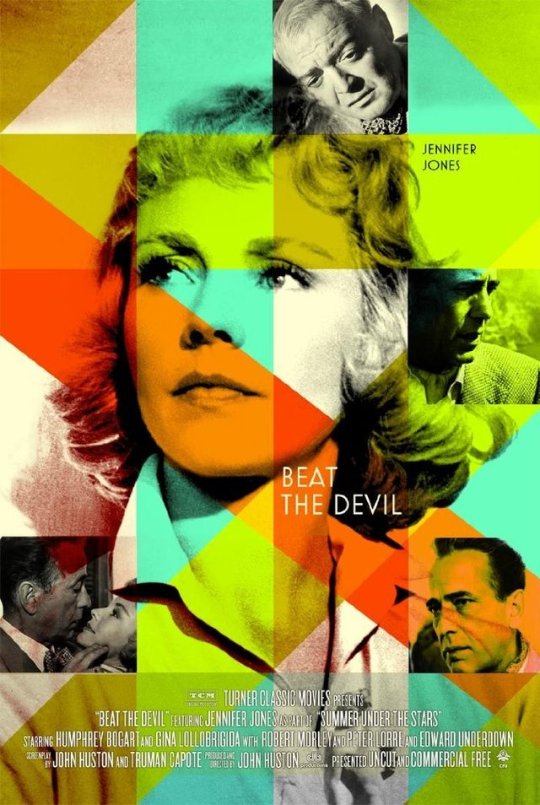
2017:84 — Beat the Devil
(1953 - John Huston) ***
#film#1953#Beat the Devil#John Huston#Claud Cockburn#James Helvick#Truman Capote#Humphrey Bogart#Jennifer Jones#Gina Lollobrigida#Robert Morley#Peter Lorre#Edward Underdown#Ivor Barnard#Marco Tulli#Bernard Lee#three stars
2 notes
·
View notes
Video
youtube
Beat The Devil (1953) [Action] [Adventure] [Comedy]
Timeless Classic Movies
Beat the Devil is a 1953 British film directed by John Huston, starring Humphrey Bogart, Jennifer Jones and Gina Lollobrigida, and featuring Robert Morley, Peter Lorre and Bernard Lee.
Huston and Truman Capote wrote the screenplay, loosely based upon a novel of the same name by British journalist Claud Cockburn, writing under the pseudonym James Helvick.
Houston made the film as a parody of a genre of film. Although often described as a parody of The Maltese Falcon, which Huston directed and in which Bogart and Lorre appeared, this is not the case.
The script, written on a day-to-day basis as the film was shot, concerns the adventures of a motley crew of swindlers and ne'er-do-wells trying to claim land rich in uranium deposits in Kenya as they wait in a small Italian port to travel aboard a tramp steamer en route to Mombasa.
---
Plot: Billy Dannreuther (Humphrey Bogart) is a formerly-wealthy American who has fallen on hard times. He is reluctantly working with four crooks: Peterson (Robert Morley), ex-Nazi Julius O'Hara (Peter Lorre), Major Jack Ross (Ivor Barnard) and Ravello, who are trying to acquire uranium-rich land in British East Africa. Billy suspects that Major Ross murdered a British Colonial officer, who threatened to expose their plan. While waiting in Italy for passage to Africa, Billy and his wife Maria (Gina Lollobrigida) meet a British couple: Harry (Edward Underdown) and Gwendolen Chelm (Jennifer Jones), who plan to travel on the same ship. Harry is a very proper and traditional Englishman, while Gwendolen is flighty and fanciful and a compulsive liar. Billy and Gwendolen have an affair, while Maria flirts with Harry. Peterson becomes suspicious that the Chelms may be attempting to acquire the uranium themselves. His suspicions are unfounded, but they seem to him to be confirmed by Gwendolen, who lies about her husband and exaggerates his importance.
Billy and Peterson are in a car accident and wrongly reported to have been killed. In order to replace Peterson's lost capital, Ravello approaches Harry Chelm and explains their scheme. Just then, to everyone's surprise, Billy and Peterson return to the hotel alive and unharmed. The purser announces that the ship is at last ready to sail. On board, Harry reveals that he knows about Peterson's scheme and intends to inform the authorities. Peterson orders Major Ross to kill Harry, but Billy thwarts the murder attempt. Harry's outraged accusations alienate the ship's drunken captain, who locks Harry in the brig, where he is uncomfortable, but safe from Major Ross.
The ship's engine malfunctions and the ship sinks. When Billy goes to free Harry he finds that Harry has escaped and left the ship, intending to swim ashore. The passengers abandon the sinking ship in a lifeboat and land on an African beach, where they are arrested by Arab soldiers. They are interrogated by Ahmed, an Arab official who suspects that they may be spies or revolutionaries. Billy befriends Ahmed by talking with him about Rita Hayworth, upon whom Ahmed has a crush. Billy persuades him to send the party back to Italy. When they land, they are met and questioned by a Scotland Yard detective (Bernard Lee), who is investigating the murder of the Colonial officer. Gwendolen reveals Peterson's scheme, and his involvement in the murder, and his attempt to murder Harry, to the detective, who promptly arrests Peterson, O'Hara, Major Ross and Ravello. As the four crooks are led away in handcuffs, Gwendolen receives a telegram from British East Africa saying that Harry has acquired the land Peterson and the others meant to steal, and is now extremely rich and willing to forgive Gwendolen, Billy and Maria. Billy laughs happily, saying "This is the end, the end!".
---
Directed and produced by John Huston, screenplay by John Huston and Truman Capote, based on the novel Beat the Devil (1951) by Claud Cockburn (as James Helvick), starring Humphrey Bogart as Billy Dannreuther, Jennifer Jones as Mrs. Gwendolen Chelm, Gina Lollobrigida as Maria Dannreuther, Robert Morley as Peterson, Peter Lorre as Julius O'Hara, Edward Underdown as Harry Chelm, Ivor Barnard as Maj. Jack Ross, Marco Tulli as Ravello, Bernard Lee as Insp. Jack Clayton, Mario Perrone as Purser on SS Nyanga, Giulio Donnini as Administrator, Saro Urzì as Captain of SS Nyanga, Aldo Silvani as Charles, restaurant owner and Juan de Landa as Hispano-Suiza Driver --- Source: "Beat the Devil (film)" Wikipedia, The Free Encyclopedia. Wikimedia Foundation, Inc.. 27 November 2016. Web. 29December 2016.
https://en.wikipedia.org/wiki/Beat_th...) If you like this movie and our channel, please subscribe: https://goo.gl/0qDmXeCategoryFilm and AnimationSHOW LESS
5 notes
·
View notes
Photo

Gina Lollobrigida and Humphrey Bogart in Beat the Devil (John Huston, 1953)
Cast: Humphrey Bogart, Jennifer Jones, Gina Lollobrigida, Robert Morley, Peter Lorre, Edward Underdown, Ivor Barnard, Marco Tulli, Bernard Lee. Screenplay: Truman Capote, John Huston, based on a novel by Claud Cockburn. Cinematography: Oswald Morris. Art direction: Wilfred Shingleton. Film editing: Ralph Kemplen. Music: Franco Mannino.
Humphrey Bogart called John Huston's Beat the Devil a "mess," which it is, but much of the messiness is due to Bogart's presence in the film. His tough-guy persona, for which Huston himself was largely responsible after casting Bogart in roles like Sam Spade in The Maltese Falcon (1941) and Fred C. Dobbs in The Treasure of the Sierra Madre (1948), puts him tonally out of sync with the rest of the cast of eccentrics in Beat the Devil. Bogart doesn't seem to know how to play Billy Dannreuther, an American trying to recoup his fortunes by playing along with some rather oddball crooks and grifters: the florid Peterson (Robert Morley), the German-Chilean who calls himself O'Hara (Peter Lorre), the lugubrious Italian Ravello (Marco Tulli), and the fascist Maj. Jack Ross (Ivor Barnard), whose name almost suggests his character -- a humanoid Jack Russell terrier with a hair-trigger temper. Moreover, Dannreuther is rather improbably mated with the scheming Maria (Gina Lollobrigida) and equally improbably wooing the compulsive liar Gwendolen Chelm (Jennifer Jones). That Bogart has no chemistry with either actress, both of whom give delicious performances, further drags the film down. Jones made two films with Huston, this one and the little-seen We Were Strangers (1949), and they are two of the most interesting performances in her career, making me wish that Huston had been able to release Jones more frequently from the clutches of David O. Selznick. Everyone, including Edward Underdown as Gwendolen's husband, Harry, does delightful comic work except Bogart, who glumly and blankly delivers lines he doesn't seem to be trying to understand. That may be understandable, given that the screenplay was being written by Huston and Truman Capote -- and the uncredited Peter Viertel and Anthony Veiller -- pretty much on the fly while the film was being made. The result is a collection of very amusing moments pieced together with a lot of cobbled-together nonsense about uranium deposits in Africa -- in short, the stuff of which cult movies are made. I'm not a member of the cult, but I happily watch Beat the Devil every now and then, especially for the performances of Jones and Morley and Lorre, while wishing that Huston had cast someone more skilled than Bogart -- Grant? Stewart? Cooper? -- at working amid chaos and nonsense.
0 notes
Text
HUMPHREY BOGART QUOTES
“- Maj. Jack Ross: This generation's had its chance. Hitler, Mussolini, those were the men. Now it's the age of the barbarians. The world's going up in smoke. I say let it come. Get it over with. - Billy Dannreuther: Well, if you don't mind, I'd like another year or so of worrying.” IVOR BARNARD - Maj. Jack Ross HUMPHREY BOGART - Billy Dannreuther
0 notes
Link
For just $3.99 The 39 Steps Released on August 1, 1935: When a Canadian man visiting London tries to help a mysterious woman, she is suddenly murdered, and our hero is accused of the crime. He must go on the run to not only clear his name, but to prevent a spy ring from stealing top secret information. Directed by: Alfred Hitchcock Written by: John Buchan with screenplay by Charles Bennett The Actors: Robert Donat Richard Hannay, Madeleine Carroll Pamela, Lucie Mannheim Annabella Smith, Godfrey Tearle Porfessor Jordan, Peggy Ashcroft Margaret Crofter, John Laurie John Crofter, Helen Haye Mrs. Jordan, Frank Cellier Sheriff Watson, Wylie Watson Mr. Memory, Gus McNaughton traveler with Pipe, Jerry Verno traveler, Peggy Simpson the maid, Ivor Barnard political meeting chairman, Charles Bennett second passerby near the bus, Noel Birkin unknown, Matthew Boulton fake police officer, Edgar K. Bruce unknown, Kate Cutler unknown, Philip Desborough unknown, Pat Hagate emcee who introduces Mr. Memory, Alfred Hitchcock paserby near the bus, Carleton Hobbs second fake policeman, Vida Hope usherette, Robert Horton unknown, Elizabeth Inglis Hillary, Professor Jordan's daughter, James Knight detective at London Palladium, Hubert Leslie unknown, Miles Malleson Palladium manager, Quentin McPhearson vicar on the Flying Scotsman, Phyllis Morris unknown, Frederick Piper milkman, Hilda Trevelyan innkeeper's wife, John Turnbull Scottish Police Inspector, S.J. Warmington man from Scotland Yard. Runtime: 1h 27m *** This item will be supplied on a quality disc and will be sent in a sleeve that is designed for posting CD's DVDs *** This item will be sent by 1st class post for quick delivery. Should you not receive your item within 12 working days of making payment, please contact us as it is unusual for any item to take this long to be delivered. Note: All my products are either my own work, licensed to me directly or supplied to me under a GPL/GNU License. No Trad...
0 notes
Photo
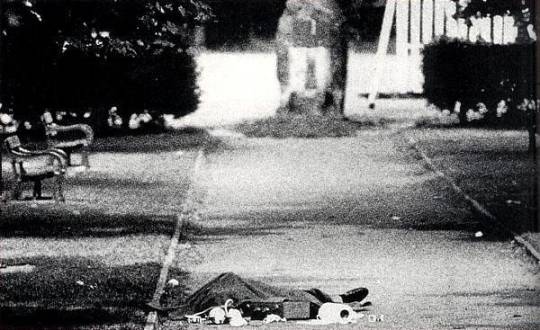
The Hungerford massacre part 4 He then shot at an ambulance which had just arrived, shattering the window and injuring paramedic Hazel Haslett, who sped away before Ryan was able to fire at her and her colleague again. Ryan shot at windows and at people who appeared on the street. Ryan's mother, Dorothy, then drove into South View and was confronted by her burning house, her armed son, and the dead and injured strewn along the street. Ivor Jackson, who was still slumped in White's Toyota, heard Dorothy open the door of the car and say, "Oh, Ivor..." before attempting in vain to reason with her son. Ryan shot her in her abdomen and legs before firing two fatal shots into her back as she lay on the ground. Ryan then wounded Betty Tolladay, who had stepped out of her house to admonish Ryan for making noise, as she had assumed he was shooting at paper targets in the woods. Ryan then ran towards Hungerford Common. The police were now informed of the situation but the evacuation plan was not fully effective. Ryan's movements were tracked via police helicopter almost an hour after he set his home alight, but this was hampered by media helicopters and journalists responding to reports of the attacks. A single police officer, who observed Ryan, recommended that armed police be used, as the weapons he saw in Ryan's possession were beyond the capabilities of Hungerford police station's meager firearms locker. On Hungerford Common, Ryan went on to shoot and kill young father-of-two, Francis Butler, as he walked his dog, and shot at, but missed, teenager Andrew Cadle, who sped away on his bicycle. Local taxi driver Marcus Barnard slowed down his Peugeot 309 as Ryan crossed in front of him. Ryan shot him with the Type 56, causing a massive injury to his head and killing him. Barnard had been redirected towards the Common by a police diversion as communication between ground forces and the police helicopter remained sporadic. Ann Honeybone was slightly injured by a bullet as she drove down Priory Avenue. Ryan then shot at John Storms, a washing-machine repairman who had parked on Priory Avenue. #destroytheday https://www.instagram.com/p/B0L4rrOBkTX/?igshid=93g0pd156i05
0 notes
Video
The Stars Look Down (1940) | Michael Redgrave | Margaret Lockwood |
he Stars Look Down movie is a British film released in 1940. This classic film is based on A. J. Cronin's novel was written in 1935 with the same title. The film is about injustices in a mining town in North East England. Coal miners, who are led by Robert "Bob" Fenwick, vote to go on strike. The miners are refusing to work in a particular section of the mine. The reason is due to the great danger of flooding. Tensions rise as the strikers go hungry. Cast Michael Redgrave as David "Davey" Fenwick Margaret Lockwood as Jenny Sunley Emlyn Williams as Joe Gowlan Nancy Price as Martha Fenwick Allan Jeayes as Richard Barras Edward Rigby as Robert "Bob" Fenwick Linden Travers as Mrs. Laura Millington Cecil Parker as Stanley Millington Milton Rosmer as Harry Nugent, MP George Carney as Slogger Gowlan Ivor Barnard as Wept Olga Lindo as Mrs. Sunley Desmond Tester as Hughie Fenwick David Markham as Arthur Barras Aubrey Mallalieu as Hudspeth Kynaston Reeves as Strother Clive Baxter as Pat Reedy James Harcourt as Will Frederick Burtwell as Union Official Dorothy Hamilton as Mrs. Reedy Frank Atkinson as Miner David Horne as Mr. Wilkins Edmund Willard as Mr. Ramage Ben Williams as Harry Brace Scott Harrold as Schoolmaster Strother (as Scott Harold) You are invited to join the channel so that Mr. P can notify you when new videos are uploaded, https://www.youtube.com/@nrpsmovieclassics
0 notes
Text
Beat the Devil (John Huston, 1953)
Beat the Devil es una película delirante, disparatada y contagiosamente enloquecida, de una osadía comparable tan solo al descaro y desparpajo de que hacen gala cuantos perpetraron tal atentado a la seriedad artística, los usos y las buenas costumbres que propugnan los historiadores del séptimo arte —siempre rezagados—, a las razonables exigencias del comercio y la industria. Se diría que semejante desprecio por las virtudes de la lógica, la verosimilitud y la coherencia no pueden sino obedecer al propósito, doloso e irresponsable, de sabotear el producto y bloquear el funcionamiento de la cadena de montaje en serie. Huston y sus cómplices fueron aquella temporada unos malos muchachos y a punto estarían de arruinar a los incautos proveedores de fondos, engatusados por un reparto estelar tan heteróclito como atractivo para los que oyen campanas sin saber d��nde: Humphrey Bogart, Gina Lollobrigida, Jennifer Jones; hasta los comparsas son ilustres, sobre todo Peter Lorre y Robert Morley, abandonados o inducidos a la más regocijante «sobreactuación» de sus respectivas carreras, ricas en personajes truculentos, interpretados con un actuación» de sus respectivas carreras, ricas en personajes truculentos, interpretados con un histrionismo que bordea la autoparodia (véase a Lorre en Crimen y castigo, El halcón maltés, Veinte mil leguas de viaje submarino o Jerry Calamidad, por poner un ejemplo de cada década).
No sé si los Woolf Brothers irían a dar con sus huesos en la cárcel, pero poco parece haberles importado a sus socios John Huston (productor), Jack Clayton (asociado), Bogie (Santana Productions)— perder sus aportaciones, tras embarcar en la aventura a David O. Selznick (consorte de Jennifer), Robert Haggiag, Dear Film y United Artists, con tal de divertirse como locos y, de paso, permitir que, casi treinta años después , lo pasemos en grande algunos (al menos) de sus espectadores.
Evidentemente, rodada sin guion, o haciendo caso omiso del previsto inicialmente, e improvisada sobre la marcha en un «set» con barra libre a cargo del presupuesto, con un timonel dispuesto a aceptar la colaboración pirada, bebida o bromista de cualquier integrante del reparto o del equipo técnico, no es de extrañar que sea la película menos ilustrativa —no había nada que traducir en imágenes, naturalmente— de Huston, la más libre y cómica, la más espontánea e imprevisible, la más socarrona y la que mejor revela un cierto lado del carácter de su autor, que en otras obras se hace invisible o insospechable (pienso, por ejemplo, en Reflejos en un ojo dorado). Claro que para lanzarse tan alegre y despreocupadamente al placer de urdir cuentos chinos y de filmar sin pensar en qué dirá la crítica es preciso rodearse de los compinches apropiados: no a todo el mundo le inspira el whisky ni le estimula la falta de ataduras (véase el lamentable resultado de otras fiestas semejantes, El juez de la horca, del propio Huston, o Cuatro tíos de Texas, de Aldrich); pero hay que reconocer, tanto de antemano como a la vista de lo conseguido, que los invitados por Huston a este guateque en Italia eran inmejorables: ni siquiera la idea de casar a Bogie con la Lollo era entonces tan sádica o disparatada como puede parecer ahora, si se recuerda que por aquellas fechas Gina estaba realmente seductora en películas como Pan, amor y fantasía (1953) o Pan, amor y... celos (1954), de un Comencini a mitad de camino entre Renoir y Berlanga; y Jennifer Jones, teñida de rubio y convertida en una mitómana digna de figurar en el Guinness Book of Records, se revela una feliz compañera de juego.
Se ha dado mucha importancia a la intervención (como co-guionista reclutado sobre la marcha) de Truman Capote, pero a menos que de vacaciones o bajo los efectos del alcohol sea otra persona, nada encuentro en Beat the devil que lleve la marca del autor de Breakfast at Tiffany's o In cold blood, pese a haber leído cuanto ha dado a la imprenta. Es más, los diálogos —que considero de lo más geniales del cine de habla inglesa— son inconfundibles aunque caricaturescamente «hustonianos», y sólo existe una diferencia de grados y de tono entre éstos y los de otras películas del creador de El hombre que pudo reinar, atribuible a la euforia reinante durante el rodaje y a la «mitchumiana» indolencia con que los intérpretes los profieren, cuando no se entregan al más voluptuoso y consciente histrionismo. Aquí Bog parece Jerry Lewis cuando —en Un fresco en apuros (1955)— remeda a Bogart, y Lorre se desplaza más sinuosamente, más «pegado al suelo» y con la cabeza más hundida entre los hombros que nunca —ni siquiera en Secret Agent (1936), de Hitchcock, o en Arsenic and Old Lace (1942), de Capra, estuvo tan demencialmente gracioso, y su expresión de infinito fastidio cuando le llaman «O'Horror» (en vez de O'Hara) está aún más cerca de colmar su paciencia que cuando Kirk Douglas le despeinaba a bordo del «Nautilus»— mientras Jennifer habla sin parar y mientras más que habla, complicando más todavía una situación ya bastante liosa, Gina se deja fascinar por un pulcro británico que no se entera de nada, y Robert Morley pasea su voluminosa silueta y trata de mantener a raya a su impulsivo esbirro, el «Galloping» Major Jack Ross (Ivor Barnard), y a su escuálido y compungido socio (Marco Tulli).
Nada diré de la enrevesada historia, pues contarla a grandes rasgos requeriría diez veces la extensión máxima de esta crítica y sólo serviría para marear al lector y perderle en un laberinto que resulta mucho más grato recorrer de la mano de los personajes de la película, divertidos hasta cuando se presentan y dicen su nombre. Porque Billy Dannreuther (Bogart) y su mujer, Maria (Gina), Gwendolen Chelm (Jennifer) y su marido, Harry (Edward Underdown), como el grotesco y variopinto cuarteto de «hombres desesperados» que forman Petersen (Morley), el melifluo y quejumbroso Julius O'Hara, el belicoso ex mayor de inclinaciones nazis y el flaco Ravello, son mucho más inolvidables que un argumento que es McGuffin en estado puro, más aún que la famosa estatuilla del halcón maltés que perseguían los personajes inventados por Hammett y recreados a su modo por Huston.
Bastantes años después, empezando por Truffaut —en el memorable Tirez sur le pianiste (1960)— para acabar con una legión de novicios americanos que más vale no mentar (en los 70), a la que se sumó algún «listo» intelectual, borracho de Brecht y no de bourbon, han tratado de emular —sin darse cuenta o citando explícitamente su modelo— lo que Huston y su pandilla hicieron en Beat the Devil espontánea y casi inconscientemente. Ahora bien, lo mismo que no está al alcance del Burt Kennedy de Ataque al carro blindado (1967), el ritmo calmo y despacioso de Hawks en Eldorado (1966), para conseguir el tono suelto y relajado de La burla del diablo, es preciso no confundir la despreocupación con el desapego, ni la conciencia de la representación con la famosa «distanciación», y —sobre todo— no creer que es lo mismo el humor y la autoironía que el sarcasmo y la parodia. Los que no sepan distinguir lo pagarán muy caro: como espectadores serán incapaces de apreciar la diferencia existente entre The Maltese Falcon, The Big Sleep o To Have and Have Not, por un lado, y Beat the Devil o The African Queen, por otro, y se perderán lo que unas y otras ofrecen; si se trata de directores, actores o guionistas, la cuestión es más grave y se arriesgan a hacer el ridículo, en el mejor de los casos, o una estupidez.
Beat the Devil invita a la risa cómplice, pero ¡ojo!: sólo de los que se toman muy en serio lo que cuentan The Maltese Falcon (de Hammett o de Huston), Key Largo, The Asphalt Jungle, To Have and Have Not (tanto el de Hemingway como el, muy diferente y aún mejor, de Hawks), The Big Sleep (de Chandler o de Hawks), The Long Goodbye (de Chandler), Red Harvest, The Glass Key o The Thin Man (de Hammett), Sleeping Beauty o The Underground Man (de Ross MacDonald) o, para llegar al límite, Casablanca (de Michael Curtiz). Los advenedizos, los «modernos» o los degustadores «desde las alturas» de lo kitsch, lo camp o las «pasadas» deben recordar las inmortales palabras del viejo Charlie Allnutt, «Lo que más odio en el mundo son las sanguijuelas», e imaginarlas escritas en los títulos de La burla del diablo tras la advertencia que daba comienzo a Citizen Kane: «NO TRESPASSING».
Miguel Marías
Revista “Casablanca” nº 5, mayo-1981
Escaneo: Rodrigo Dueñas
0 notes
Text
The Queen of Spades (1949) - Episode 9 - Decades of Horror: The Classic Era
“This is a very rare book. I wouldn’t recommend it to everyone. … Who knows what you may learn from it. You might end up by gaining a fortune or losing your precious soul.” So said a wizened, antique bookseller (Ivor Barnard) to Captain Herman Suvorin (Anton Walbrook) as he sold him a tome of supernatural secrets. Join the Decades of Horror: The Classic Era’s Grue Crew - Chad Hunt, Erin Miskell, Jeff Mohr, and Joseph Perry - as they journey back to 1949 and take a gamble on The Queen of Spades.
Decades of Horror: The Classic Era Episode 7 – The Queen of Spades (1949)
Is The Queen of Spades the best horror film of 1949? It is according to Bloody Disgusting and Rotten Tomatoes. The film was thought to be lost until 2009 and when Jeff noticed it was now available for streaming, he excitedly added the film to the schedule as his next pick. The Queen of Spades tells the story of a young countess who strikes a Faustian bargain with the devil and exchanges her soul for the ability to gamble and win at Faro. Years later, a lower class, army officer, who resents the aristocracy and is obsessed with gaining comparable status in society, stalks Lizaveta Ivanova (Yvonne Mitchell), the ward of the now elderly Countess, to gain access to the secret of the cards. In the process, he causes the death of the Countess and finds himself haunted by the woman's spirit.
After viewing The Queen of Spades, your intrepid Classic Era Grue Crew couldn’t agree on whether it was a horror movie or not. Erin, Joseph, and Chad questioned its horror bonafides while Jeff stuck with the hand he dealt himself and played his “deal with the devil” and “evil haunting” cards. After all, it was the best horror film of 1949, right? However, Joseph is quick to point out the competition in 1949 was as thin as a playing card, causing us all to question the value of it being referred to as the “year’s best.”
If you have not heard of the 1834 Alexander Pushkin story on which the film is based, you will find yourself in the same boat as we did when we were surprised to learn there had been over twenty adaptations of the story over the years. It’s also likely you have not heard of the film’s director, Thorold Dickinson. You will be shocked to learn what Martin Scorsese has to say about Dickinson in general and The Queen of Spades specifically. Even Wes Anderson (The Grand Budapest Hotel) has something interesting to say about this film.
We also discuss the answers to these burning questions. Does the performance of Dame Edith Evans, as the elderly Countess Ranevskaya, live up to her reputation as the greatest actress on the English stage in the 20th century? Why did Anton Walbrook flee Germany? Where have I seen Ronald Howard, who plays Suvorin’s aristocratic friend Andrei, before? Which of these actors played Sherlock Holmes in the 1950s? What does Mary Poppins have to do with The Queen of Spades? Which of the film’s actors also appeared in a Hammer film? What was used for the snow to depict the Russian winter?
If you’re paying attention, you’ll also hear which of us makes these memorable comments:
“I am down with the young people!”
“There are many old bitty horror films ... you know, that’s a subgenre, I’m not being mean.”
“The higher the hair, the closer to God.”
“At first I thought it was film grain, but I think there were actual bees flying in and out of that thing.”
“Because I’m anal.”
If you’d like to listen to the “The Queen of Spades” radio episode of Mystery in the Air, starring Peter Lorre and first aired in 1947, you can check it out here.
We plan to release a new episode every other week. Our upcoming schedule includes The Last Man on Earth (1964), Village of the Damned (1960), Viy (1967), and The Cabinet of Dr. Caligari (1920).
Please let us know what you think of Decades of Horror: The Classic Era and what films you’d like to hear us cover! We want to hear from you! After all, without you, we’re just four nutjobs talking about the movies we love. Send us an email ([email protected], [email protected], [email protected], or [email protected]) or leave us a message, a review or a comment at GruesomeMagazine.com, iTunes, the Horror News Radio App, or the Horror News Radio Facebook group.
To each of you from each of us, “Thank you for listening!”
Check out this episode!
0 notes
Photo
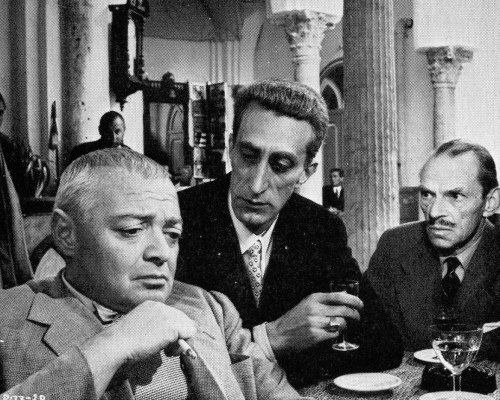
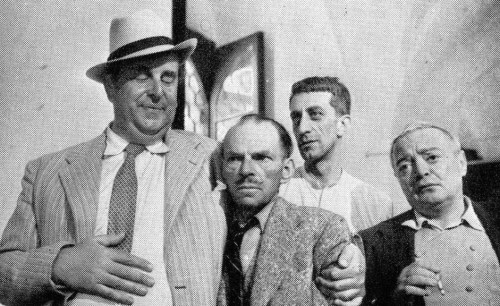
Robert Morley, Ivor Barnard, Marco Tulli and Peter Lorre in John Huston's Beat the Devil. 1953.
24 notes
·
View notes
Link
For just $3.99 Released on September 28, 1948: A kitchen maid falls in love with a footman, but the footman runs away with another woman, leaving pregnant Esther to raise her baby as a single mother in a world that looks harshly on her. Genre: Drama Duration: 50min Director: Ian Dalrymple Actors: Kathleen Ryan (Esther Waters), Dirk Bogarde (William Latch, footman), Cyril Cusack (Fred), Ivor Barnard (John Randall, butler), Fay Compton (Mrs. Barfield), Margaret Diamond (Sarah Tucker), George Hayes (journeyman), Morland Graham (Ketley), Mary Clare (Mrs. Latch), Pauline Jameson (hospital nurse), Shelagh Fraser (Margaret), Margaret Withers (Grover), Julian D'Albie (Squire Barfield), Nuna Davey (Matron), Beryl Measor (Mrs. Spires), Barbara Shaw (mistress), Archie Harradine (singer), Duncan Lewis (butcher), A. Parker (jockey Fred Archer), F. Lane (jockey Webb), Billy Rees (the demon), John Edward Davy (the fire eater's young assistant), Hilda Fenemore (unknown), Gareth Van Den Bogaerde (Esther's teenage son) *** This item will be supplied on a quality disc and will be sent in a sleeve that is designed for posting CD's DVDs *** This item will be sent by 1st class post for quick delivery. Should you not receive your item within 12 working days of making payment, please contact me so we can solve this or any other questions. Note: All my products are either my own work, licensed to me directly or supplied to me under a GPL/GNU License. No Trademarks, copyrights or rules have been violated by this item. This product complies with rules on compilations, international media, and downloadable media. All items are supplied on CD or DVD.
0 notes